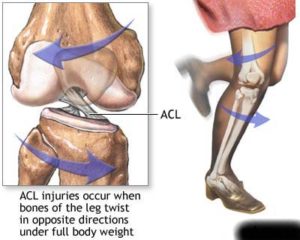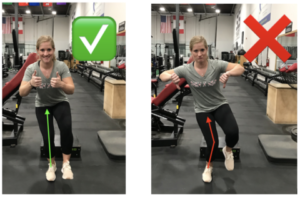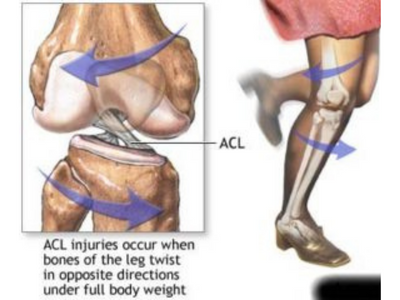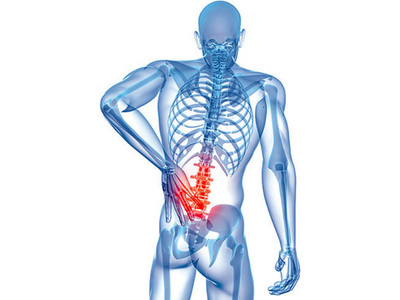
As Indians are adopting to more sporting lifestyle to maintain fitness or for leisure, the number of ACL tears reported has risen drastically. Earlier the age groups were either sporting population, females or accidental ACL Tears but, recently young adolescents playing sports like Football, Kabaddi, Cricket, etc have incurred ACL tears along with the existing categories.
Despite thousands of research articles and investigations, the fact that we can predict an ACL injury is only situational…..yes I’m not going to say biomechanics and other factors like all articles. Why situational…..let me enlighten the perspective as per my understanding.
First of all most Indians who incur an ACL tear, are playing for fun…so when you are playing, the question is that…..is an exercise science genie watching you and telling “hey u landed with a faulty stance, bowl correctly”….if yes then u may be saved, but if not…u might end up with an ACL tear and sit in an orthopods clinic hearing” get reconstruction done otherwise you will get osteoarthritis”…..boom……there goes a gun on your knee…..
coming back to the prevention topic…normally a physio prehab program must go on for 8-10 weeks for logical and scientific effects. In my experience, I had a chance to conduct a prehab for the under 19 women’s cricket team in Mumbai…although it was just 4 weeks, the results were fantastic. similarly, I had a chance to conduct a musculoskeletal assessment on the Senior Indian Basketball women’s team, upon which, one player was identified to be predisposed to an ACL injury, for which I had implemented a prehab program, which gave fantastic results.
Having said that. a traumatic ACL tear is not a possibility to prevent unless u gauge/ foresee the injury happening and prevent yourself.
check out our client assessment done for a post-op ACL tear client ready to enter his 3rd phase of rehab and closer to playing football again
The prevention program is based on certain principles which we follow at physiocure. If u are a budding athlete or fitness freak, it is a must to learn a program to strengthen the legs to prevent these injuries, and even before that, it is important to identify the population which could be susceptible to ACL tears strategically.
THE SIX PRINCIPLES OF PREVENTION STRATEGIES (Nessler et all 2017)(1)
Age
It is recommended that ACL prevention programs be implemented at an early age. Fewer ACL injuries were documented in younger athletes who performed a neuromuscular training program compared to older athletes who performed the same program
Figure 7
Physiocure Exercise Prevention (PEP) programs are based on the above principles. to learn a proper landing technique or jumping technique, we follow the PEP program wherein the biomechanical fault is first examined, and then the required solution is set up as a prehab program for the player.
for eg:- A basketball player, tall had a habit of playing quickly, but was not able to make quick turns, had a history of knee injuries for which treatment was done. on examination, the jump analysis showed that the player had a habit of letting the knees collapse, which in turn shows poor hip control. Accordingly, a glute activation and strengthening program were recommended along with correct jump landing drills.
Biomechanics
Faulty biomechanics correlated with increased strain on the ACL during different movement patterns and sporting activities with increased knee valgus being one of the strongest indicators of increased ACL injury risk…..what the last statement means is that when you are landing from a jump, the fact that your knee falls in is one of the biggest predictors that you might get an ACL tear
Compliance
Compliance with the performance of an ACL prevention program is vital to the ability of the program to be successful at reducing injury rates. Compliance greater than 66% resulted in an ACL injury reduction rate of 82%. However, when the compliance rate dropped to less than 66%, the ACL injury reduction rate dropped to 44%. Currently, compliance is subject to a large degree of heterogeneity in literature, and the need to have a uniform definition is needed.
Dosage
Frequent participation in an ACL prevention program decreases the risk of ACL injury. Most studies agree that each session should be between 20 and 30 min and should be performed several times per week. Optimally, they should be initiated in the pre-season and continued throughout the season to attain the full effectiveness of the program.
Feedback
Many studies included some type of feedback, and whether verbal or visual, a decrease in ACL injuries has been shown. Feedback can be in the form of verbal cueing from a coach or a training partner, but can also be visual as in a training video. Feedback should also come in the form of an external focus versus an internal focus. External focus is directed toward the outcome or effects of the movement, assists the automation of movements, and accelerates the learning process. When teaching proper landing mechanics, an external focus command would be, “Try to bring your knees as close to the outside walls as possible when you land”. Internal focus is directed toward specific movements, such as “keep your knees out,” and this constant focus on correct movement can lead to a reduction in athlete’s motivation. Thus, it is recommended that a feedback system be implemented in an ACL prevention program with an external focus.
Exercise Variety
ACL injury prevention programs that included a variety of different exercises have a greater incidence of decreasing injury risk versus programs that include only one type of exercise or component (plyometric, balance, strengthening). These exercises can be mainly classified into three different components: plyometrics, neuromuscular training, and strength training. All three have been utilized as stand-alone programs or have been combined to create comprehensive prevention programs.
check out these 10 simple exercises to improve balance




